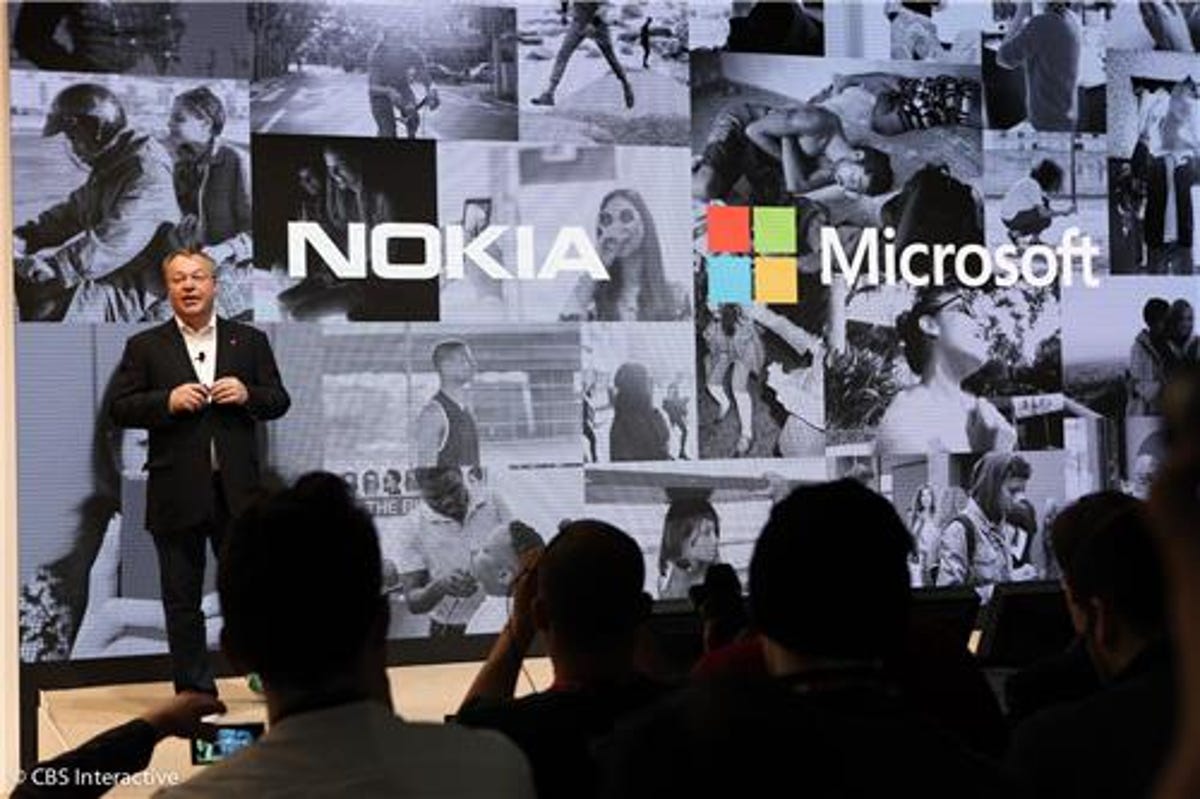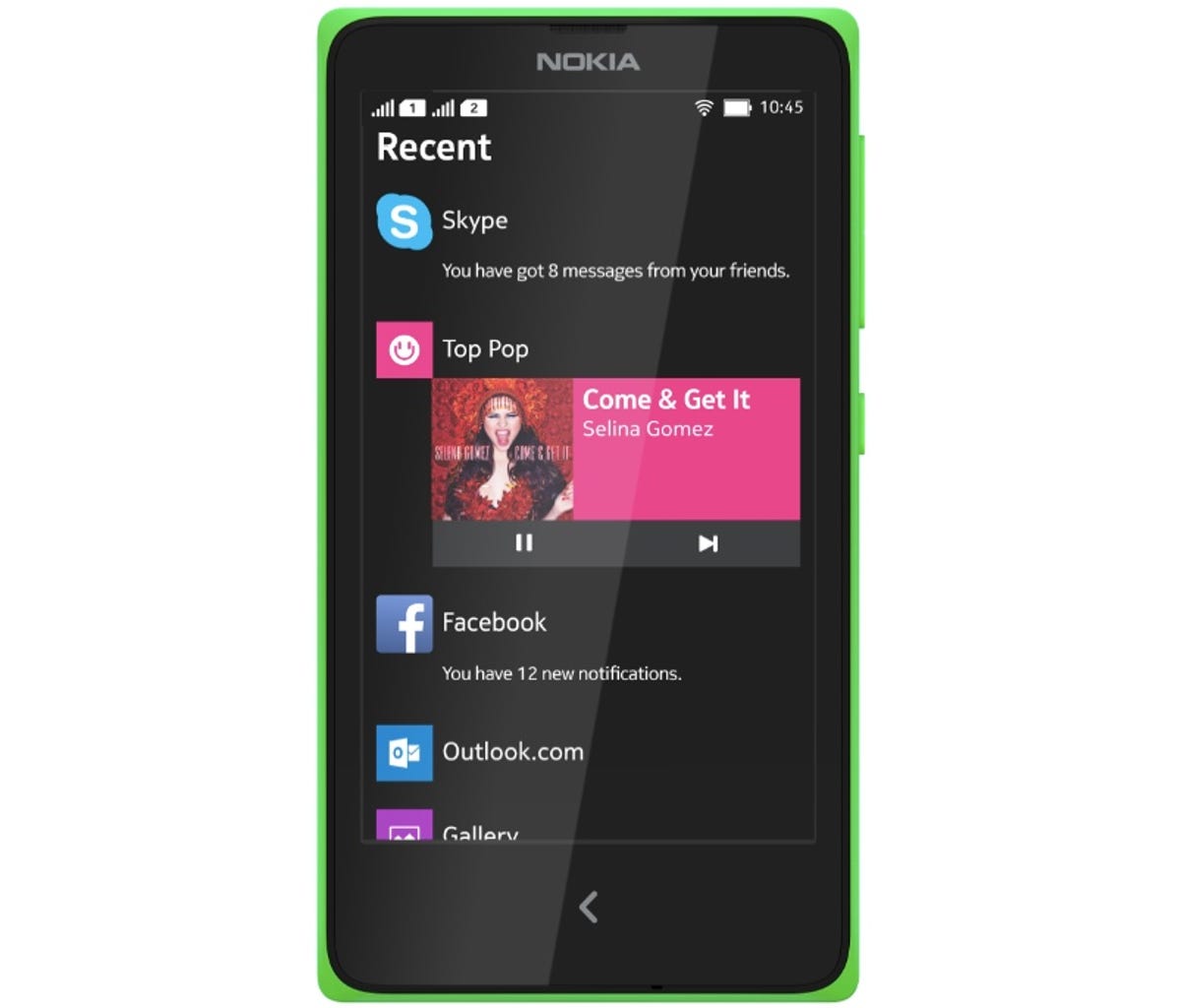BARCELONA, Spain — You would think that Nokia’s first Android smartphone would make for the start of a tense relationship with soon-to-be parent Microsoft.
Well, you’d be wrong.
The Nokia X, alongside its brothers the Nokia X+ and the larger Nokia XL, may turn out to be a boon to both companies. The Android phones can be held up as a symbol of Microsoft’s continued neutrality, even in the face of the pending acquisition of Nokia’s devices business. Nokia, meanwhile, gets an even more competitive budget phone that it can serve up to emerging markets, an area where the struggling company has found success.
Related stories:
- Hybrid Nokia X is Android, but not as you know it
- Nokia X OS: An Android-Windows Phone mess
- Nokia Asha 230: Cheapest Asha yet
- Basic Nokia 220 costs only 30 Euros
- All the news from MWC 2014
At first glance, the use of Android by Nokia, which has exclusively used Microsoft’s Windows Phone platform since moving past its legacy Symbian operating system, would seem like a slap in the face.
Android, after all, is the dominant operating system while Windows Phone is a distant third, still trying to prove its legitimacy in the smartphone world. By choosing Android over Windows Phone, Nokia would seem to be impeding Microsoft’s progress.
On the contrary: with this phone that Nokia is pushing Microsoft and its services first. Stephen Elop, head of the Nokia devices business, was quick to stress that the phone would allow emerging markets consumers to access services such as Skype, Outlook, and OneDrive. He specifically noted that there would not be Google’s cloud services on the phone, with Microsoft and Nokia services at the forefront.
“The Nokia X will be a feeder system for Lumia,” Elop said during the press conference. “We’re introducing the next billion people to Microsoft.”
Nokia’s X is a Windows Phone, Android, and Asha mashup (pictures)






+8 more
Microsoft, meanwhile, did express support Nokia’s efforts during the conference.
“Overall, we’re delighted to introduce the best of Microsoft with Nokia X,” said Lara Kingwell, part of Microsoft’s Skype team.
And look at how the Nokia X is priced. The phone isn’t meant to replace the low-end Windows Phone device; instead, it falls in between Lumia and Nokia’s Asha line of phones, which are basically starter smartphones. The Asha line, to which Nokia also added at its Mobile World Congress press conference on Monday, serves the lowest-end market where budget constraints are at an extreme but there is still a desire for a smartphone. They are essentially feature phones running on Symbian.


Sarah Tew/CNET
The Nokia X isn’t going to eat up the business going toward Windows Phone. If anything, it’ll potentially expand its opportunity in the ultra-low end by offering up such a feature-rich smartphone at an attractive price.
Indeed, Nokia seems high on this line, with the Nokia X potentially the first in a family of Android products for the low end. The Nokia X+ and XL, which will launch in the second quarter, are the first examples of that.
Android meets live tiles
Just look at how Nokia used Android. Nokia opted to “fork” Android, heavily altering it so it looks nothing like a typical Android phone. Instead, there are live tiles that can be adjusted just as on a Windows Phone.
There’s also no official way to access the Google Play store. Instead, Nokia X owners will have to find alternative app stores or Nokia’s own app store. While the Nokia X can run many Android apps, there are still some that are incompatible due to the changes, or would require alterations.
It’s also not like this comes as a surprise to Microsoft. Joe Belfiore, vice president of operating systems at Microsoft, said Sunday that he’s fully supportive of Nokia’s work. Still, he couldn’t help but land a subtle jab.
“Some things we’re excited about, some things we’re less excited about,” Belfiore said, eliciting more than a few chuckles.
With Nokia seeing much of its growth coming from emerging markets and its lower-end phones, a device like the Nokia X is critical to its continued success in the area. If it sells a ton of these phones, that will eventually contribute to the bottom line of Microsoft.
From Microsoft’s point of view, the Nokia X is a token of neutrality. If there were any concerns that Nokia would benefit from an unfair advantage as part of Microsoft, the software titan could point to its Android project as evidence that the unit is indeed operating independently. There’s no way Microsoft would allow Nokia to create an Android device if it was pulling the strings, right?


Nokia
That might come as some reassurance from the likes of Lenovo, one of several new partners committed to developing Windows Phone devices.
Perhaps down the line, Windows Phone will be cheaper and more flexible to use than Android. Microsoft yesterday provided a glimpse into its next update for Windows Phone, which called for lower standards for specification, the removal of requirements for physical keys, and dual-SIM slots, all moves designed to lower the cost of the device for manufacturers.
For now, the Nokia X still isn’t anything for Microsoft to sweat over.
Corrected at 2:51 am PT: The first name of Microsoft’s Skype executive was misspelled.



